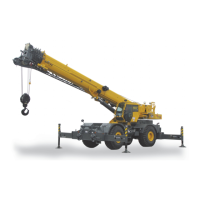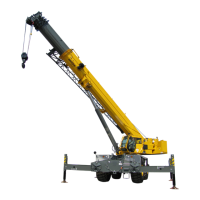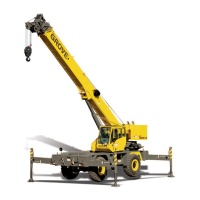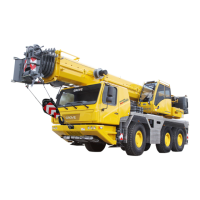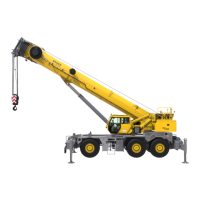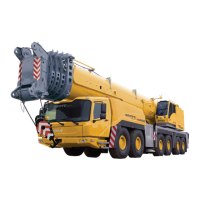HYDRAULIC SYSTEM RT765E-2 SERVICE MANUAL
2-62
Published 9-04-2014, Control # 422-08
4. Apply hydraulic pressure to the retract (rod) side of the
cylinder and observe the open cylinder port for leakage.
If leakage is observed, the seals in the cylinder must be
replaced.
5. Reconnect all cylinder ports.
Temperature Effects On Hydraulic Cylinders
Hydraulic oil expands when heated and contracts when
cooled. This is a natural phenomena that happens to all
liquids. The coefficient of expansion for API Group 1
hydraulic oil is approximately 0.00043 cubic inches per cubic
inch of volume for 1°F of temperature change. Thermal
contraction will allow a cylinder to retract as the
hydraulic fluid which is trapped in the cylinder cools.
The change in the length of a cylinder is proportional to the
extended length of the cylinder and to the change in
temperature of the oil in the cylinder. For example, a cylinder
extended 25 feet in which the oil cools 60°F would retract
approximately 7 3/4 inches (see chart below). A cylinder
extended 5 feet in which the oil cools 60°F would only retract
approximately 1 1/2 inches. The rate at which the oil cools
depends on many factors and will be more noticeable with a
larger difference in oil temperature verses the ambient
temperature.
Thermal contraction coupled with improper or inadequate
lubrication or improper wear pad adjustments, and operation
at low boom angles may, under certain conditions, cause a
“stick-slip” condition in the boom. This “stick-slip” condition
could result in the load not moving smoothly. Proper boom
lubrication and wear pad adjustment is important to permit
the boom sections to slide freely. Slow movement, of the
boom may be undetected by the operator unless a load is
suspended for a long period of time. To minimize the effects
of thermal contraction or “Stick-slip” it is recommended that
the telescope control lever is activated periodically in the
extend position to mitigate the effects of cooling oil.
If a load and the boom is allowed to remain stationary for a
period of time and the ambient temperature is cooler than the
trapped oil temperature, the trapped oil in the cylinders will
cool. The load will lower as the telescope cylinder(s) retracts
allowing the boom to come in. Also, the boom angle will
decrease as the lift cylinder(s) retracts causing an increase
in radius and a decrease in load height.
This situation will also occur in reverse. If a crane is set up in
the morning with cool oil and the daytime ambient
temperature heats the oil, the cylinders will extend in similar
proportions.
Table 2-5 has been prepared to assist you in determining the
approximate amount of retraction/extension that may be
expected from a hydraulic cylinder as a result of change in
the temperature of the hydraulic oil inside the cylinder. The
chart is for dry rod cylinders. If the cylinder rod is filled with
hydraulic oil, the contraction rate is somewhat greater.
NOTE: Operators and service personnel must be aware
that load movement, as a result of this phenomena,
can be easily mistaken as leaking cylinder seals or
faulty holding valves. If leaking seals or faulty
holding valves are suspected to be the problem,
refer to Service Bulletin 98-036 dealing with testing
telescope cylinders.
Reference Only

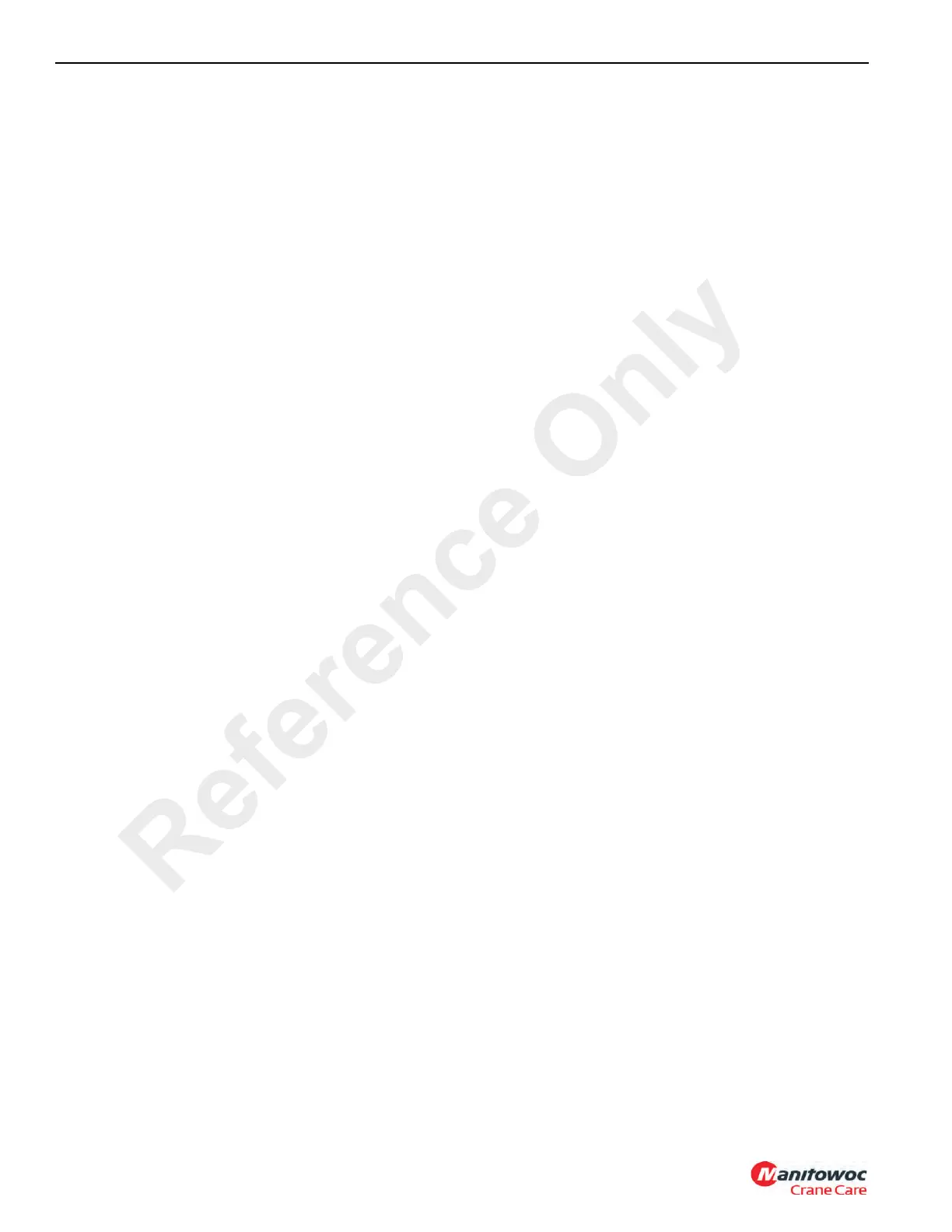